Petrogenesis of the Nashwaak Granite, West-Central New Brunswick, Canada: Evidence from Trace Elements, O and Hf Isotopes of Zircon, and O Isotopes of Quartz
Abstract
1. Introduction
2. Geological Background
3. Analytical Methods
3.1. Oxygen Isotope Analysis of Zircon and Quartz
3.2. Trace Element and Hf Isotopic Analysis of Zircon
4. Results
4.1. Trace Elements in Zircon
4.2. CL Images and Oxygen Isotopes in Zircon and Quartz
4.3. Hafnium Isotopes in Zircon
5. Discussion
5.1. Crystal Fractionation and Contamination
5.2. Titanium-In-Zircon Thermometry
5.3. Oxygen Fugacity
5.4. Magma Sources and Evolution as Recorded by O–Hf Isotopes
6. Conclusions
Supplementary Materials
Author Contributions
Funding
Acknowledgments
Conflicts of Interest
References
- van Staal, C.R.; Barr, S.M. Lithospheric Architecture and Tectonic Evolution of the Canadian Appalachians and Associated Atlantic Margin; Special Paper; Geological Association of Canada: St. John’s, NF, Canada, 2012; Volume 49, pp. 41–95. [Google Scholar]
- van Staal, C.R.; Whalen, J.B.; Valverde-Vaquero, P.; Zagorevski, A.; Rogers, N. Pre-Carboniferous, episodic accretion-related, orogenesis along the Laurentian margin of the northern Appalachians. In Ancient Orogens and Modern Analogues; Special Publication; Murphy, J.B., Keppie, J.D., Hynes, A.J., Eds.; Geological Society: London, UK, 2009; Volume 327, pp. 271–316. [Google Scholar]
- Whalen, J.B.; Jenner, G.A.; Longstaffe, F.J.; Hegner, E. Nature and evolution of the eastern margin of Iapetus: Geochemical and isotopic constraints from Siluro-Devonian granitoid plutons in the New Brunswick Appalachians. Can. J. Earth Sci. 1996, 33, 140–155. [Google Scholar] [CrossRef]
- Kerr, A.; Jenner, G.A.; Fryer, B.J. Sm-Nd isotopic geochemistry of Precambrian to Paleozoic granitoid suites and the deep-crustal structure of the southeast margin of the Newfoundland Appalachians. Can. J. Earth Sci. 1995, 32, 224–245. [Google Scholar] [CrossRef]
- Potter, J.; Longstaffe, F.J.; Barr, S.M. Regional 18O-depletion of Neoproterozoic igneous rocks from Avalonia, Cape Breton Island and southern New Brunswick, Canada. Geol. Soc. Am. Bull. 2008, 120, 347–367. [Google Scholar] [CrossRef]
- Schofield, D.I.; D’Lemos, R.S. Granite petrogenesis in the Gander Zone, NE Newfoundland: Mixing of melts from multiple sources and the role of lithospheric delamination. Can. J. Earth Sci. 2000, 37, 535–547. [Google Scholar] [CrossRef]
- van Staal, C.R. The Brunswick subduction complex in the Canadian Appalachians: Record of the Late Ordovician to Late Silurian collision between Laurentia and the Gander margin of Avalon. Tectonics 1994, 13, 946–962. [Google Scholar] [CrossRef]
- Zhang, W.; Lentz, D.R.; Thorne, K.G.; Massawe, R.J.R. Late Silurian-Early Devonian slab break-off beneath the Canadian Appalachians: Insights from the Nashwaak Granite, west-central New Brunswick, Canada. Lithos 2020, 358–359, 105393. [Google Scholar] [CrossRef]
- Dostal, J.; Keppie, J.D.; Wilson, R.A. Nd isotopic and trace element constraints on the source of Silurian-Devonian mafic lavas in the Chaleur Bay Synclinorium of New Brunswick (Canada): Tectonic implications. Tectonophysics 2016, 681, 364–375. [Google Scholar] [CrossRef]
- Wilson, R.A.; Kamo, S.L. Geochronology and lithogeochemistry of granitoid rocks from the central part of the Central plutonic belt, New Brunswick, Canada: Implications for Sn-W-Mo exploration. Atl. Geol. 2016, 52, 125–167. [Google Scholar] [CrossRef]
- Valley, J.W. Oxygen isotopes in zircon. Rev. Miner. Geochem. 2003, 53, 343–385. [Google Scholar] [CrossRef]
- Page, F.Z.; Fu, B.; Kita, N.T.; Fournelle, J.; Spicuzza, M.J.; Schulze, D.J.; Viljoen, F.; Basei, M.S.; Valley, J.W. Zircons from kimberlite: New insights from oxygen isotopes, trace elements, and Ti in zircon thermometry. Geochim. Cosmochim. Acta 2007, 71, 3887–3903. [Google Scholar] [CrossRef]
- Bowman, J.R.; Moser, D.E.; Valley, J.W.; Wooden, J.L.; Kita, N.T.; Mazdab, F.K. Zircon U-Pb isotope, δ18O and trace element response to 80 m.y. of high-temperature metamorphism in the lower crust: Sluggish diffusion and new records of Archean craton formation. Am. J. Sci. 2011, 311, 719–772. [Google Scholar] [CrossRef]
- Bindeman, I.N.; Valley, J.W. Low-δ18O rhyolites from Yellowstone: Magmatic evolution based on analyses of zircons and individual phenocrysts. J. Petrol. 2001, 42, 1491–1517. [Google Scholar] [CrossRef]
- Monani, S.; Valley, J.W. Oxygen isotope ratios of zircons: Magma genesis of low δ18O granites from the British Tertiary Igneous Province, western Scotland. Earth Planet. Sci. Lett. 2001, 184, 377–392. [Google Scholar] [CrossRef]
- King, E.M.; Valley, J.W.; Stockli, D.F.; Wright, J.E. Oxygen isotope trends of granitic magmatism in the Great Basin: Location of the Precambrian craton boundary as reflected in zircons. Geol. Soc. Am. Bull. 2004, 116, 451–462. [Google Scholar] [CrossRef]
- Lee, R.G.; Dilles, J.H.; Tosdal, R.M.; Wooden, J.L.; Mazdab, F.K. Magmatic evolution of granodiorite intrusions at the El Salvador porphyry copper deposit, Chile, based on trace element composition and U/Pb age of zircons. Econ. Geol. 2017, 112, 245–273. [Google Scholar] [CrossRef]
- Zeh, A.; Stern, R.A.; Gerdes, A. The oldest zircons of Africa-their U-Pb-Hf-O isotope and trace element systematics and implications for Hadean to Archean crust-mantle evolution. Precambrian Res. 2014, 241, 203–230. [Google Scholar] [CrossRef]
- Larson, T.E.; Sharp, Z.D. Interpreting prograde-growth histories of Al2SiO5 triple-point rocks using oxygen isotope thermometry: An example from the Truchas Mountains, USA. J. Metamorph. Geol. 2005, 23, 847–863. [Google Scholar] [CrossRef]
- Longerich, H.P.; Jackson, S.E.; Günther, D. Inter-laboratory note. Laser ablation inductively coupled plasma mass spectrometric transient signal data acquisition and analyte concentration calculation. J. Anal. At. Spectrom. 1996, 11, 899–904. [Google Scholar] [CrossRef]
- El-Bialy, M.Z.; Ali, K.A. Zircon trace element geochemical constraints on the evolution of the Ediacaran (600-614 Ma) post-collisional Dokhan Volcanics and Younger Granites of SE Sinai, NE Arabian-Nubian Shield. Chem. Geol. 2013, 360, 54–73. [Google Scholar] [CrossRef]
- Li, X.H.; Long, W.G.; Li, Q.L.; Liu, Y.; Zheng, Y.F.; Yang, Y.H.; Chamberlain, K.R.; Wan, D.F.; Guo, G.H.; Wang, X.C.; et al. Penglai zircon megacrysts: A potential new working reference material for microbeam determination of Hf-O isotopes and U-Pb age. Geostand. Geoanal. Res. 2010, 34, 117–134. [Google Scholar] [CrossRef]
- Jiang, H.; Li, W.Q.; Jiang, S.Y.; Wang, H.; Wei, X.P. Geochronological, geochemical and Sr-Nd-Hf isotopic constraints on the petrogenesis of Late Cretaceous A-type granites from the Sibumasu Block, Southern Myanmar, SE Asia. Lithos 2017, 268, 32–47. [Google Scholar] [CrossRef]
- Blundy, J.; Wood, B. Prediction of crystal-melt partition coefficients from elastic moduli. Nature 1994, 372, 452–454. [Google Scholar] [CrossRef]
- Sun, S.S.; McDonough, W.F. Chemical and isotopic systematics of oceanic basalts: Implications for mantle compositions and processes. In Magmatism in the Ocean Basins; Saunders, A.D., Norry, M.J., Eds.; Geological Society of London: London, UK, 1989; Special Publication; Volume 42, pp. 313–345. [Google Scholar]
- Seyedolali, A.; Krinsley, D.H.; Boggs, S.; O’Hara, P.F.; Dypvik, H.; Goles, G.G. Provenance interpretation of quartz by scanning electron microscope-cathodoluminescence fabric analysis. Geology 1997, 25, 787–790. [Google Scholar] [CrossRef]
- Miller, J.S.; Wooden, J.L. Residence, resorption and recycling of zircons in Devils Kitchen Rhyolite, Coso volcanic field, California. J. Petrol. 2004, 45, 2155–2170. [Google Scholar] [CrossRef]
- Watson, E.B.; Wark, D.A.; Thomas, J.B. Crystallization thermometers for zircon and rutile. Contrib. Mineral. Petrol. 2006, 151, 413–433. [Google Scholar] [CrossRef]
- Wooden, J.L.; Mazdab, F.K.; Barth, A.P.; Miller, C.F.; Lowery, L.E. Temperatures (Ti) and compositional characteristics of zircon: Early observations using high mass resolution on the USGS Stanford SHRIMPRG. Geochim. Cosmochim. Acta 2006, 70, A707. [Google Scholar] [CrossRef]
- Deering, C.D.; Keller, B.; Schoene, B.; Bachmann, O.; Beane, R.; Ovtcharova, M. Zircon record of the plutonic-volcanic connection and protracted rhyolite melt evolution. Geology 2016, 44, 267–270. [Google Scholar] [CrossRef]
- Ferry, J.M.; Watson, E.B. New thermodynamic models and revised calibrations for the Ti-in-zircon and Zr-in-rutile thermometers. Contrib. Mineral. Petrol. 2007, 154, 429–437. [Google Scholar] [CrossRef]
- Watson, E.B.; Harrison, T.M. Zircon thermometer reveals minimum melting conditions on earliest Earth. Science 2005, 308, 841–844. [Google Scholar] [CrossRef]
- Large, S.J.; Quadt, A.V.; Wotzlaw, J.F.; Guillong, M.; Heinrich, C.A. Magma evolution leading to porphyry Au-Cu mineralization at the Ok Tedi deposit, Papua New Guinea: Trace element geochemistry and high-precision geochronology of igneous zircon. Econ. Geol. 2018, 113, 39–61. [Google Scholar] [CrossRef]
- Shen, P.; Hattori, K.; Pan, H.; Jackson, S.; Seitmuratova, E. Oxidation condition and metal fertility of granitic magmas: Zircon trace-element data from porphyry Cu deposits in the Central Asian Orogenic Belt. Econ. Geol. 2015, 110, 1861–1878. [Google Scholar] [CrossRef]
- Ballard, J.R.; Palin, J.M.; Campbell, I.H. Relative oxidation states of magmas inferred from Ce(IV)/Ce(III) in zircon: Application to porphyry copper deposits of northern Chile. Contrib. Mineral. Petrol. 2002, 144, 347–364. [Google Scholar] [CrossRef]
- Trail, D.; Watson, E.B.; Tailby, N.D. Ce and Eu anomalies in zircon as proxies for the oxidation state of magmas. Geochim. Cosmochim. Acta 2012, 97, 70–87. [Google Scholar] [CrossRef]
- Burgisser, A.; Scaillet, B. Redox evolution of a degassing magma rising to the surface. Nature 2007, 445, 194. [Google Scholar] [CrossRef] [PubMed]
- Dilles, J.H.; Kent, A.J.; Wooden, J.L.; Tosdal, R.M.; Koleszar, A.; Lee, R.G.; Farmer, L.P. Zircon compositional evidence for sulfur-degassing from ore-forming arc magmas. Econ. Geol. 2015, 110, 241–251. [Google Scholar] [CrossRef]
- Trail, D.; Bindeman, I.N.; Watson, E.B.; Schmitt, A.K. Experimental calibration of oxygen isotope fractionation between quartz and zircon. Geochim. Cosmochim. Acta 2009, 73, 7110–7126. [Google Scholar] [CrossRef]
- Valley, J.W.; Bindeman, I.N.; Peck, W.H. Empirical calibration of oxygen isotope fractionation in zircon. Geochim. Cosmochim. Acta 2003, 67, 3257–3266. [Google Scholar] [CrossRef]
- King, E.M.; Barrie, C.T.; Valley, J.W. Hydrothermal alteration of oxygen isotope ratios in quartz phenocrysts, Kidd Creek mine, Ontario: Magmatic values are preserved in zircon. Geology 1997, 25, 1079–1082. [Google Scholar] [CrossRef]
- King, E.M.; Valley, J.W.; Davis, D.W. Oxygen isotope evolution of volcanic rocks at the Sturgeon Lake volcanic complex, Ontario. Can. J. Earth Sci. 2000, 37, 39–50. [Google Scholar] [CrossRef]
- Appleby, S.K.; Graham, C.M.; Gillespie, M.R.; Hinton, R.W.; Oliver, G.J.H. EIMF. A cryptic record of magma mixing in diorites revealed by high-precision SIMS oxygen isotope analysis of zircons. Earth Planet. Sci. Lett. 2008, 269, 105–117. [Google Scholar] [CrossRef]
- Appleby, S.K.; Gillespie, M.R.; Graham, C.M.; Hinton, R.W.; Oliver, G.J.H.; Kelly, N.M. EIMF. Do S-type granites commonly sample infracrustal sources? New results from an integrated O, U-Pb and Hf isotope study of zircon. Contrib. Mineral. Petrol. 2010, 160, 115–132. [Google Scholar] [CrossRef]
- Gagnevin, D.; Daly, J.S.; Horstwood, M.S.A.; Whitehouse, M.J. In-situ zircon U-Pb, oxygen and hafnium isotopic evidence for magma mixing and mantle metasomatism in the Tuscan Magmatic Province, Italy. Earth Planet. Sci. Lett. 2011, 305, 45–56. [Google Scholar] [CrossRef]
- Bindeman, I.N. Oxygen isotopes in mantles and crustal magmas as revealed by single crystal analysis. Rev. Mineral. Geochem. 2008, 69, 445–478. [Google Scholar] [CrossRef]
- Miles, A.; Graham, C.; Hawkesworth, C.; Gillespie, M.; Dhuime, B.; Hinton, A.R. Using zircon isotope compositions to constrain crustal structure and pluton evolution: The Iapetus Suture Zone granites in Northern Britain. J. Petrol. 2014, 55, 181–207. [Google Scholar] [CrossRef]
- King, E.M.; Valley, J.W. The source, magmatic contamination, and alteration of the Idaho batholith. Contrib. Mineral. Petrol. 2001, 142, 72–88. [Google Scholar] [CrossRef]
- Eiler, J.M. Oxygen isotope variations of basaltic lavas and upper mantle rocks. Rev. Mineral. Geochem. 2001, 43, 319–364. [Google Scholar] [CrossRef]
- King, E.M.; Trzaskus, A.P.; Valley, J.W. Oxygen isotope evidence for magmatic variability and multiple alteration events in the Proterozoic St. Francois Mountains, Missouri. Precambrian Res. 2008, 165, 49–60. [Google Scholar] [CrossRef]
- Ayuso, R.A.; Bevier, M.L. Regional differences in lead isotopic compositions of feldspars from plutonic rocks of the northern Appalachian Mountains, U.S.A. and Canada: A geochemical method of terrane correlation. Tectonophysics 1991, 10, 191–212. [Google Scholar]
- Whalen, J.B.; McNicoll, V.J.; van Staal, C.R.; Lissenberg, C.J.; Longstaffe, F.J.; Jenner, G.A.; van Breeman, O. Spatial, temporal and geochemical characteristics of Silurian collision-zone magmatism, Newfoundland Appalachians: An example of a rapidly evolving magmatic system related to slab break-off. Lithos 2006, 89, 377–404. [Google Scholar] [CrossRef]
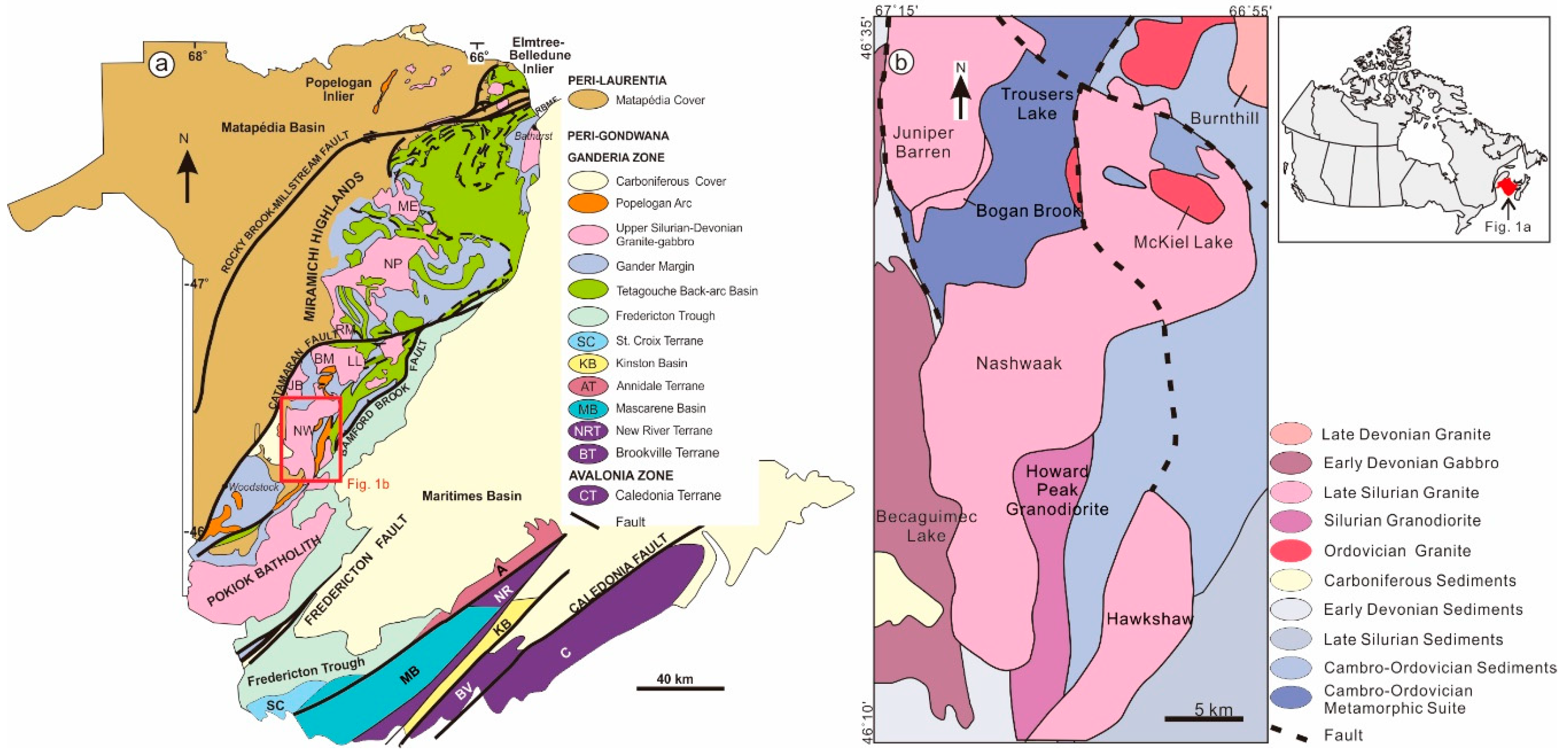
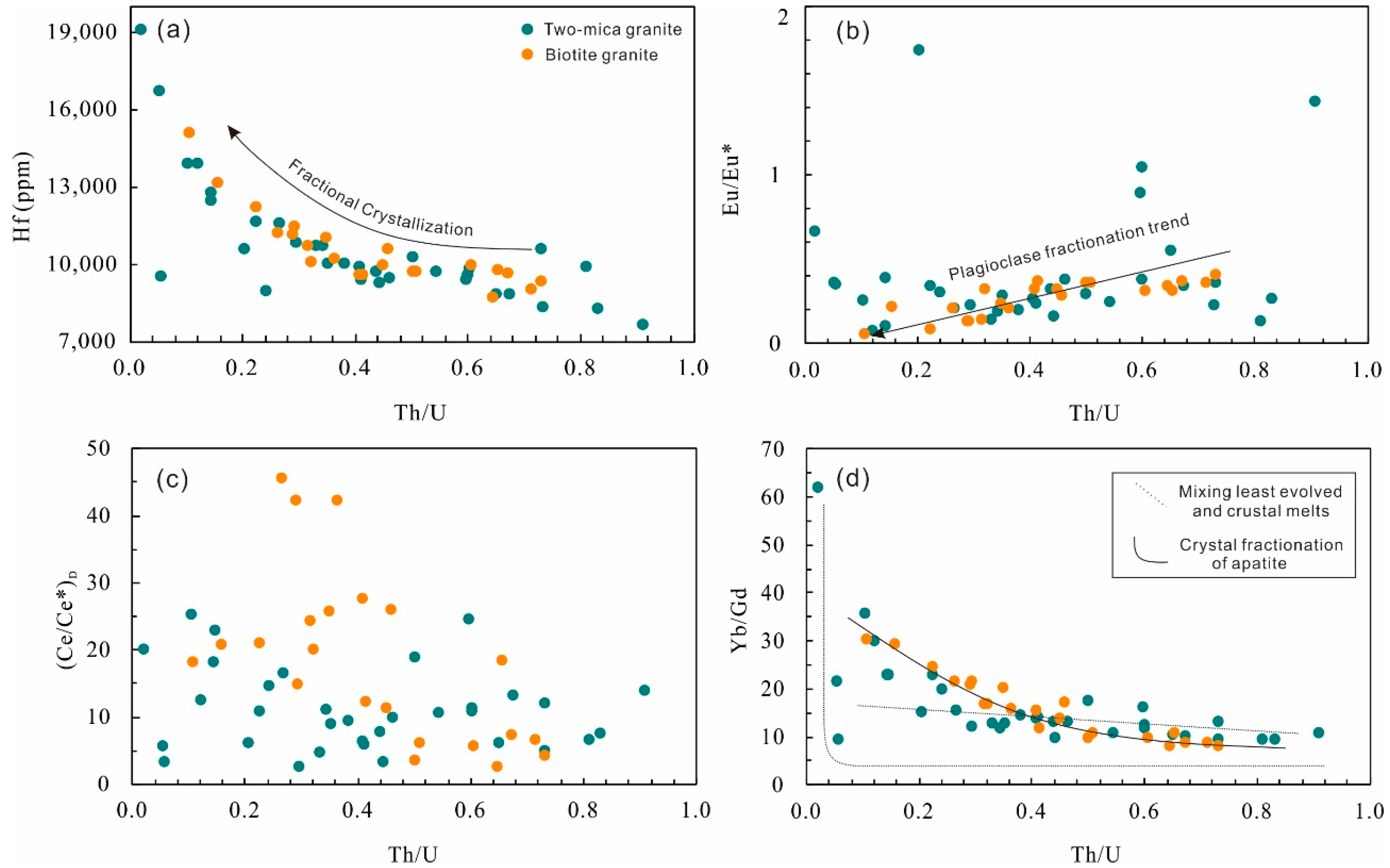

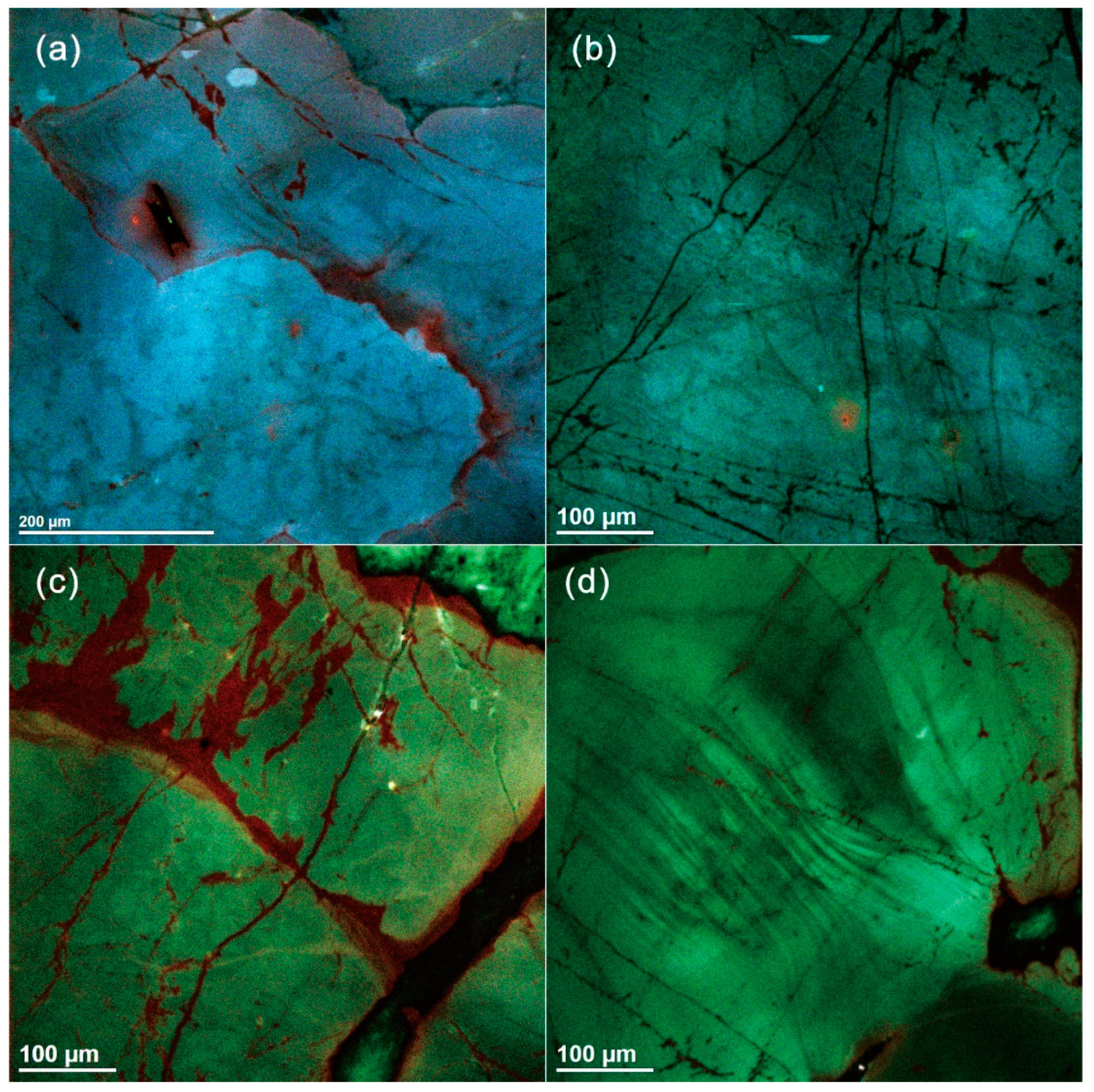
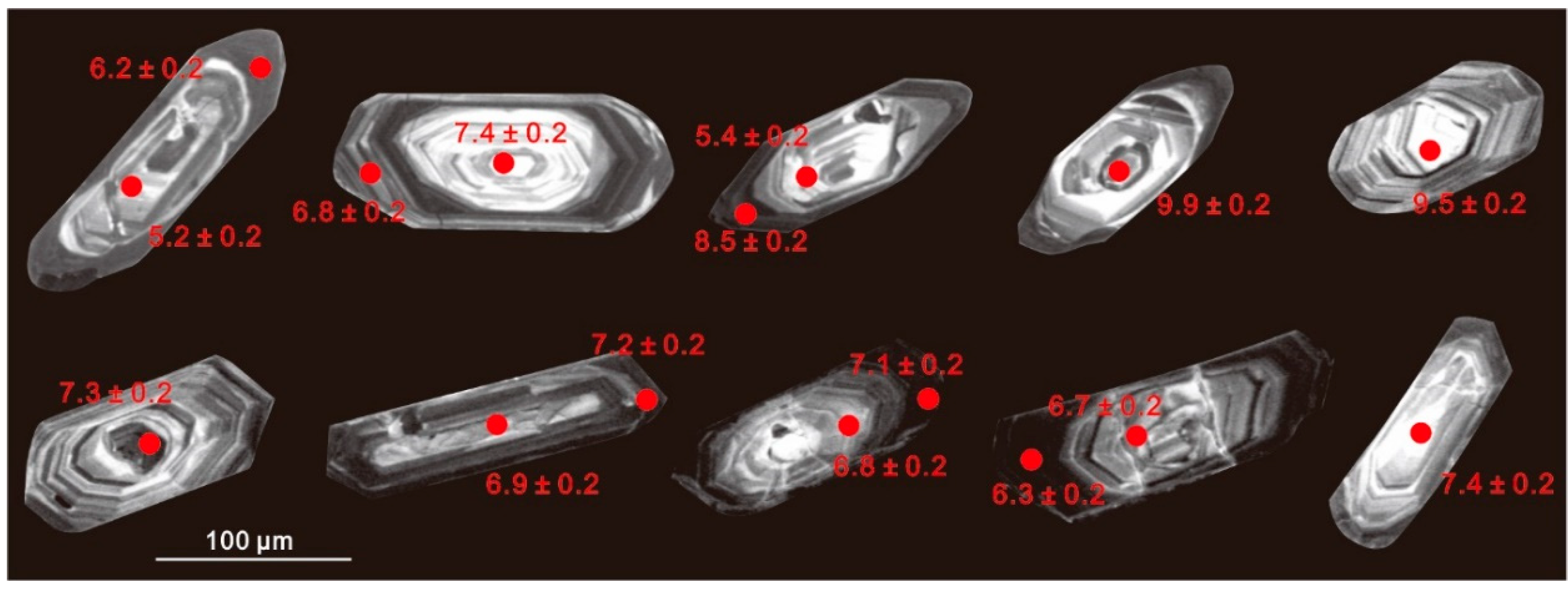
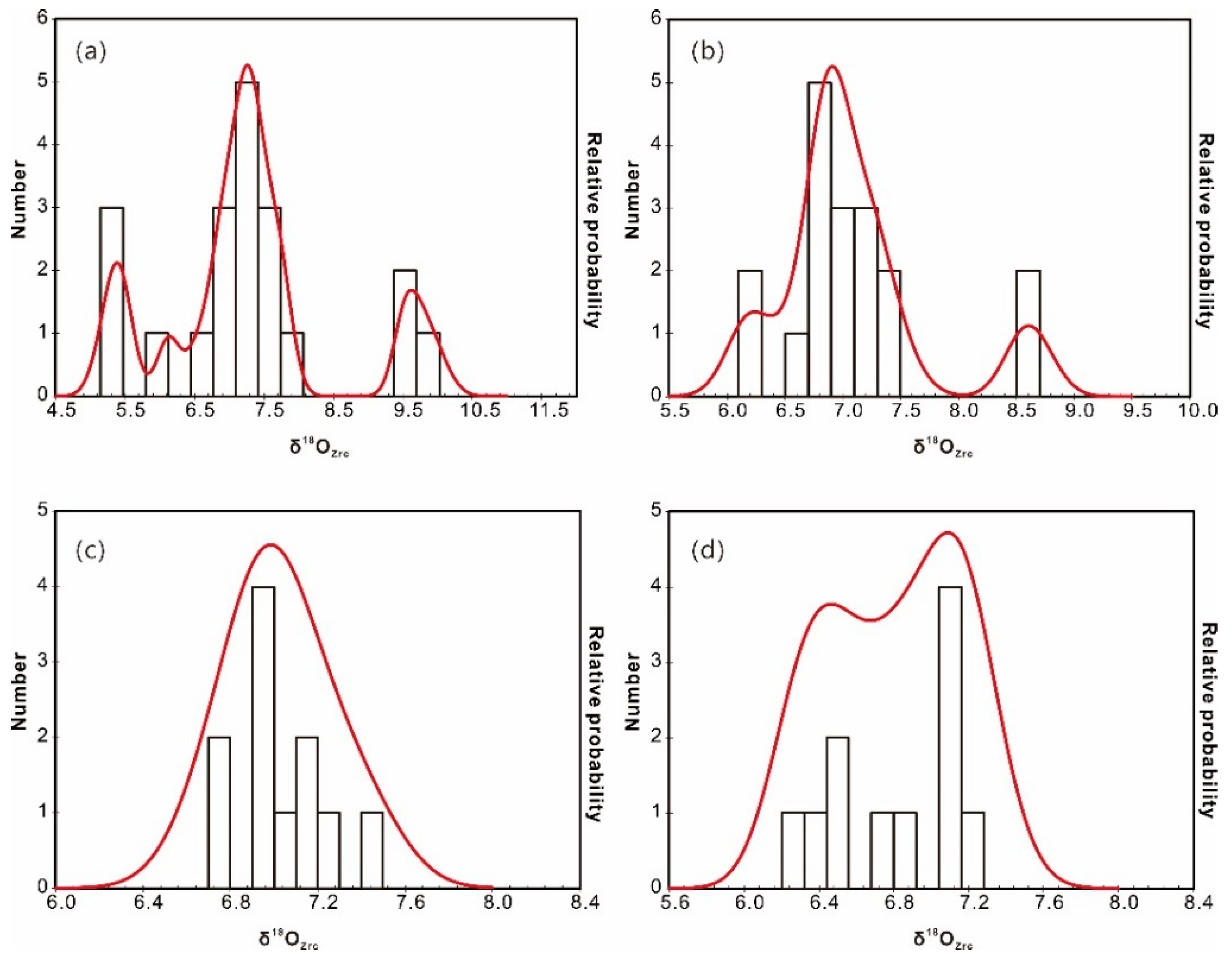
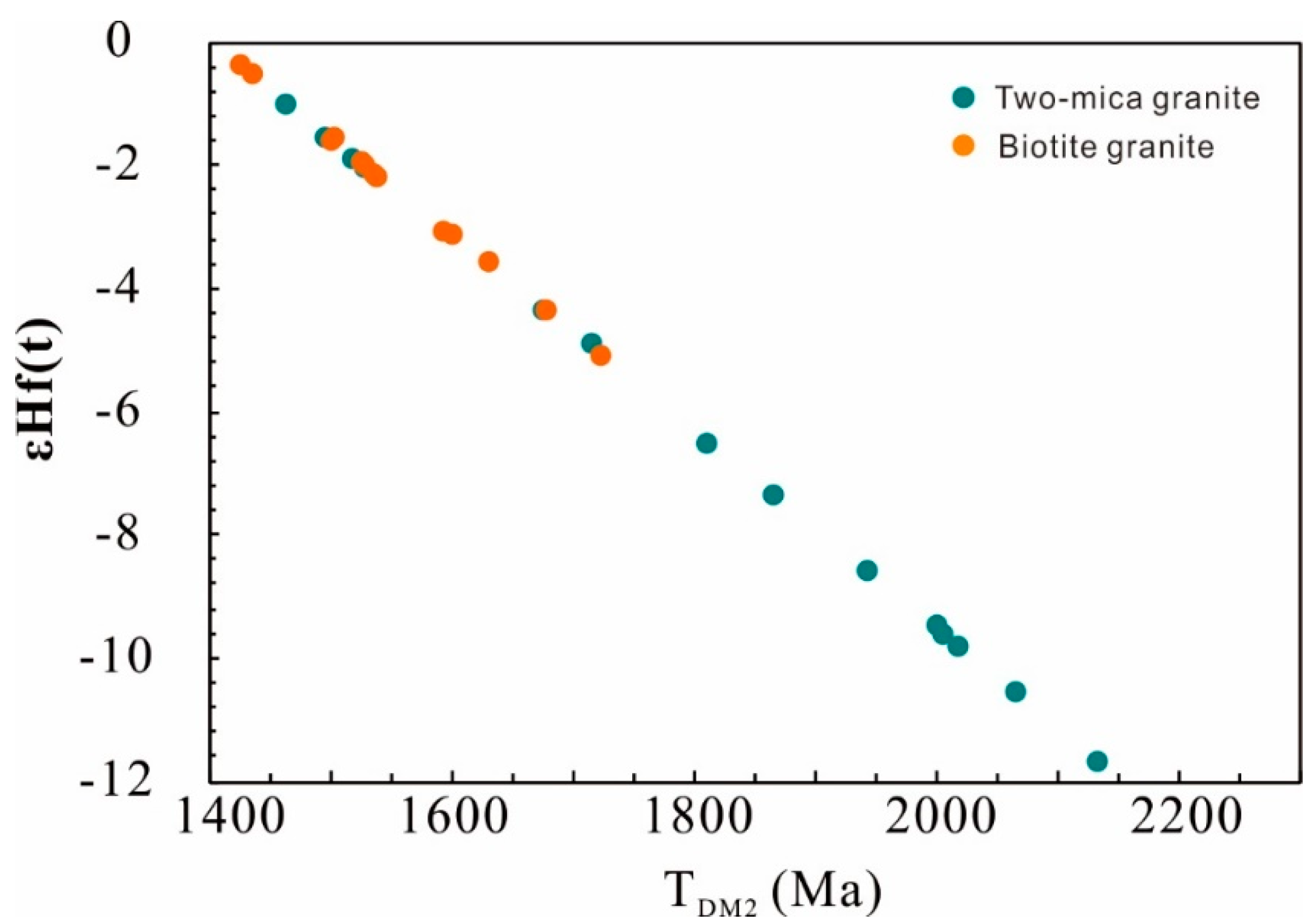
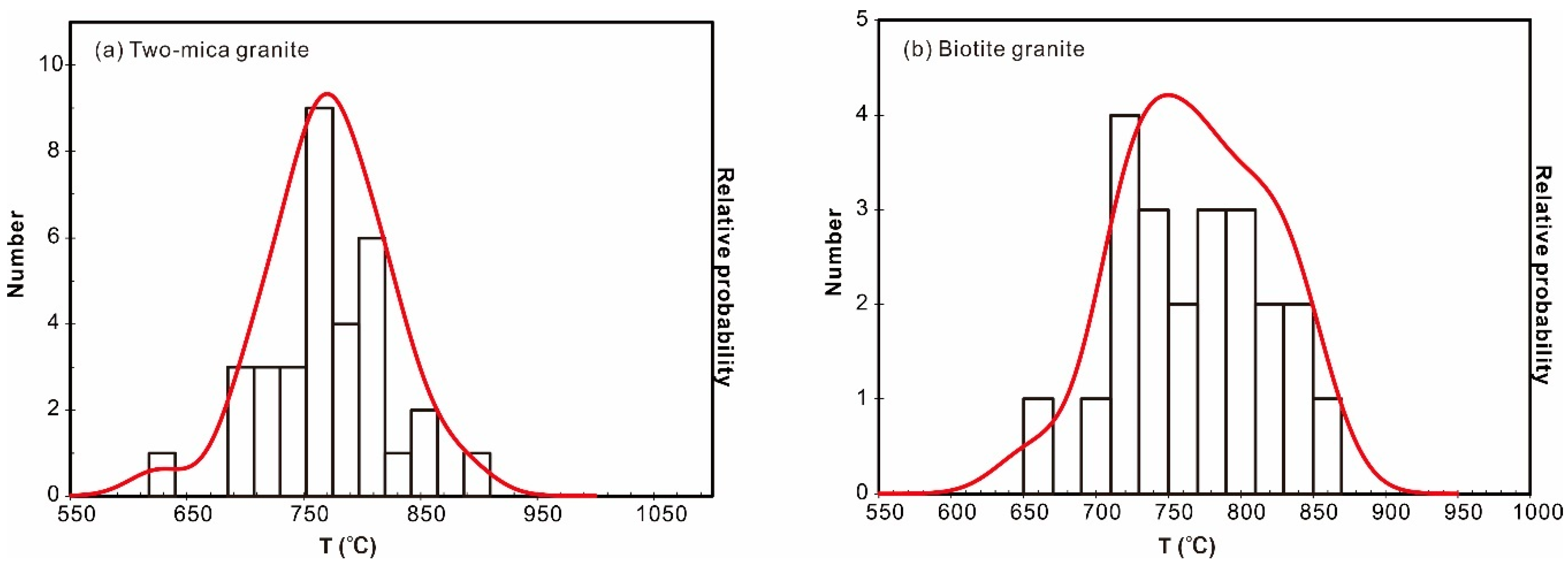
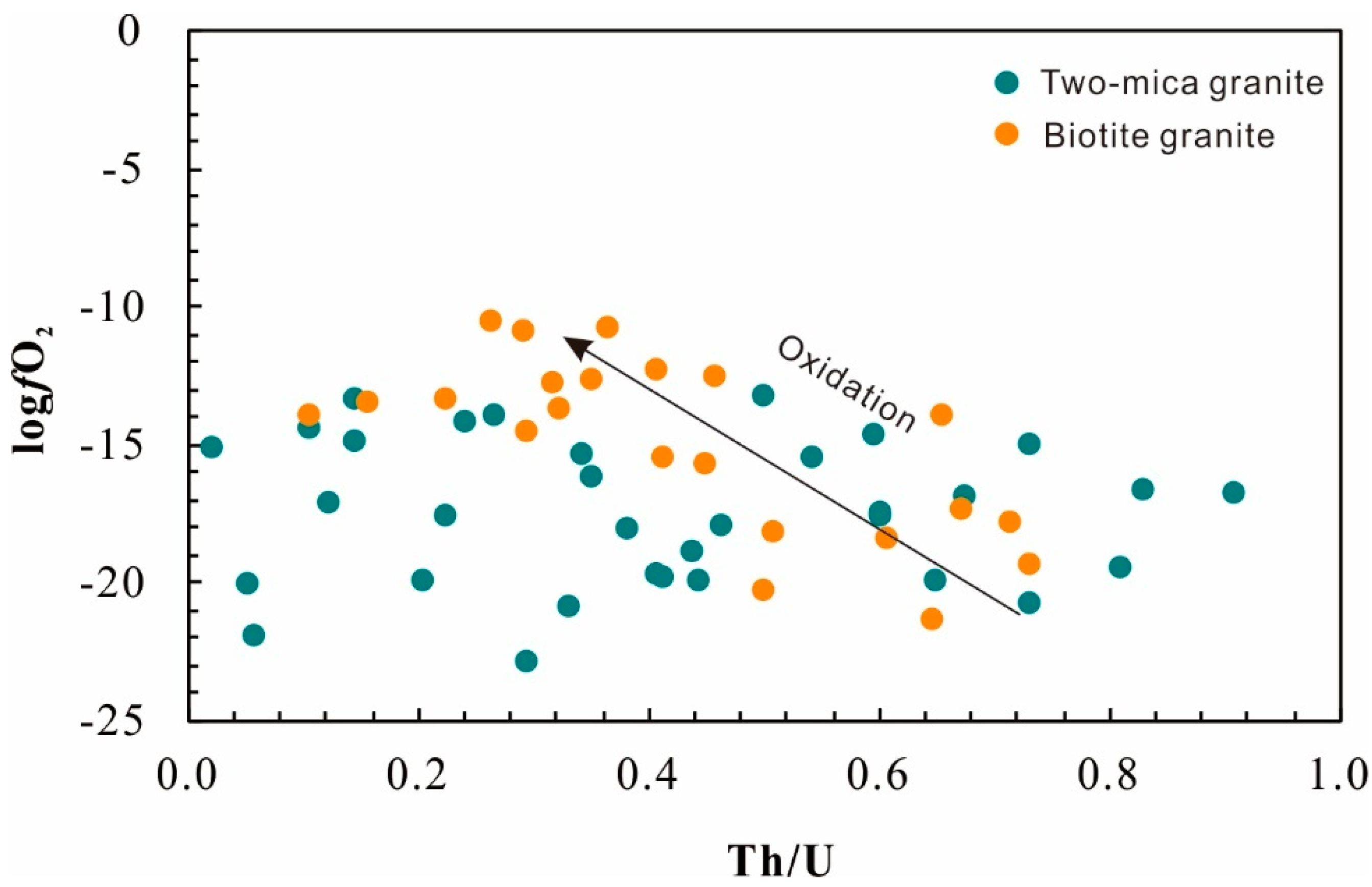
© 2020 by the authors. Licensee MDPI, Basel, Switzerland. This article is an open access article distributed under the terms and conditions of the Creative Commons Attribution (CC BY) license (http://creativecommons.org/licenses/by/4.0/).
Share and Cite
Zhang, W.; Lentz, D.R.; Thorne, K.G. Petrogenesis of the Nashwaak Granite, West-Central New Brunswick, Canada: Evidence from Trace Elements, O and Hf Isotopes of Zircon, and O Isotopes of Quartz. Minerals 2020, 10, 614. https://doi.org/10.3390/min10070614
Zhang W, Lentz DR, Thorne KG. Petrogenesis of the Nashwaak Granite, West-Central New Brunswick, Canada: Evidence from Trace Elements, O and Hf Isotopes of Zircon, and O Isotopes of Quartz. Minerals. 2020; 10(7):614. https://doi.org/10.3390/min10070614
Chicago/Turabian StyleZhang, Wei, David R. Lentz, and Kathleen G. Thorne. 2020. "Petrogenesis of the Nashwaak Granite, West-Central New Brunswick, Canada: Evidence from Trace Elements, O and Hf Isotopes of Zircon, and O Isotopes of Quartz" Minerals 10, no. 7: 614. https://doi.org/10.3390/min10070614
APA StyleZhang, W., Lentz, D. R., & Thorne, K. G. (2020). Petrogenesis of the Nashwaak Granite, West-Central New Brunswick, Canada: Evidence from Trace Elements, O and Hf Isotopes of Zircon, and O Isotopes of Quartz. Minerals, 10(7), 614. https://doi.org/10.3390/min10070614





